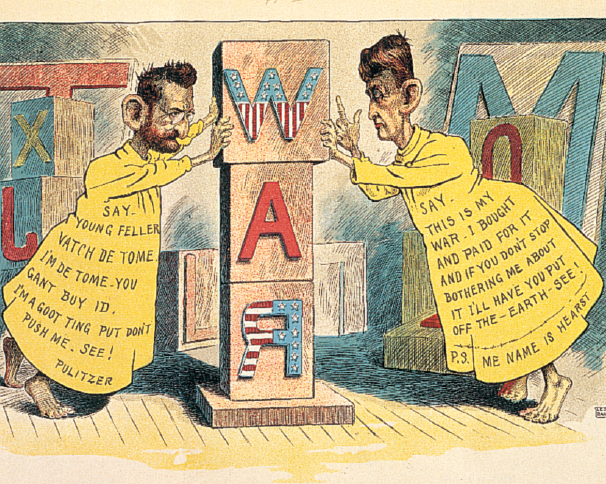Yellow Journalism
Printed Page 68
Following the tradition established by the New York Sun and New York Morning Herald, a new brand of papers arose in the late 1800s. These publications ushered in an era of yellow journalism, which emphasized exciting human-interest stories, crime news, large headlines, and easier-to-digest copy. Generally regarded as the direct forerunner of today’s tabloid papers, reality TV, and newsmagazine shows, yellow journalism featured two major characteristics:
- Overly dramatic—or sensational—stories about crimes, celebrities, disasters, scandals, and intrigue
- News reports exposing corruption, particularly in business and government—the foundation for investigative journalism
The term yellow journalism has its roots in the press war that pitted Joseph Pulitzer’s New York World against William Randolph Hearst’s New York Journal. During their furious fight to win readers, the two papers ultimately took turns hosting the first popular cartoon strip, The Yellow Kid, created in 1895 by artist R. F. Outcault. Pulitzer, a Jewish-Hungarian immigrant, had bought the New York World in 1883 for $346,000. Aimed at immigrant and working-class readers, the World crusaded for improved urban housing, better treatment of women, and equitable labor laws, while railing against big business. It also manufactured news events and printed sensationalized stories on crime and sex. By 1887, its Sunday circulation had soared to more than 250,000—the largest anywhere.
The World faced its fiercest competition when William Randolph Hearst in 1895 bought the New York Journal (a penny paper founded by Pulitzer’s brother Albert) and then raided Joseph Pulitzer’s paper for editors, writers, and cartoonists. Hearst focused on lurid, sensational stories and appealed to immigrant readers by using large headlines and bold layout designs. To boost circulation, the Journal invented interviews, faked pictures, and provoked conflicts that might result in eye-catching stories. In 1896, its daily circulation reached 450,000. A year later, the paper’s Sunday edition’s circulation rivaled the World’s 600,000.
Yellow journalism has been vilified for its sensationalism and aggressive tactics to snatch readers from competitors by appealing to their low-brow interests, but this unique era gave birth to several newspaper elements still valued by many readers today—such as advice columns and feature stories. It even laid the foundation for the prestigious Pulitzer Prizes, which today recognize quality writing, reporting, and research in such categories as poetry, history, international reporting, editorial cartooning, public service, and explanatory reporting.
